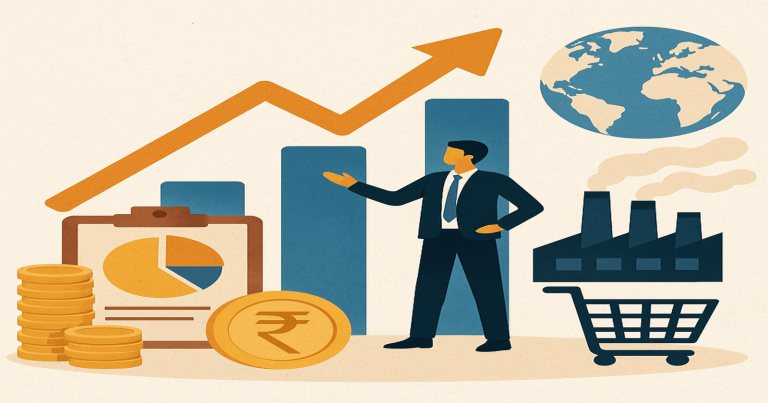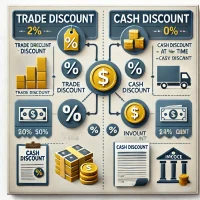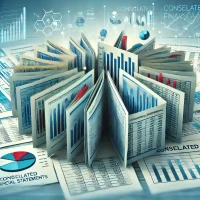Every country wants to know how much it grows every year. People, businesses, and the government all want to understand how well the economy performs. The best way to measure this is by using the GDP formula. GDP stands for Gross Domestic Product, which means the total value of all goods and services made within a country in one year. The GDP formula is a simple yet powerful tool that tells how strong or weak a country’s economy is. It helps leaders make good decisions, helps businesses plan their future, and helps people understand how the country moves forward.
The GDP formula shows how money moves through different parts of the economy. It helps track growth, compare countries, and plan for the future. Countries with a rising GDP usually offer better jobs, stronger business growth, and higher income for their people. That’s why knowing how to read and understand the GDP formula is very important for students, investors, and policymakers.
Meaning and Use of GDP
The term Gross Domestic Product (GDP) tells the total money value of all goods and services made inside a country in one year. It shows how much the economy produces. Economists use it to compare different years or countries. It helps know if a country grows or shrinks.
Countries use GDP for planning. Leaders check GDP to make good rules. If GDP grows, people earn more. If it falls, jobs go down. Banks, companies, and people follow GDP to know when to invest or save. Higher GDP means more business. Low GDP shows fewer jobs and less money.
People use GDP to compare India with other countries like China or the USA. India wants to grow its GDP every year. A strong GDP also helps in foreign trade. Investors check GDP before putting money in any country.
Types of GDP
Economists talk about different types of GDP. These help to understand the economy better. Here are four major types:
- Nominal GDP: This uses current prices. It does not adjust for price rises.
- Real GDP: This uses base-year prices. It removes the effect of inflation.
- GDP per capita: This shows GDP per person. It divides GDP by the total population.
- Gross National Product (GNP): This includes income from outside the country.
India mostly uses real GDP to check how well the economy performs. It helps to know the true growth without the price rise effect.
GDP Formula
The GDP formula tells how to calculate the country’s GDP. The formula used by most economists is:
| GDP = C + I + G + (X − M) |
Where,
- C (Consumption): Money spent by people on things like clothes, food, house rent, and travel.
- I (Investment): Money spent by businesses to build factories, machines, or tools.
- G (Government Spending): Money spent by the government on roads, hospitals, defense, and schools.
- X (Exports): Goods and services sold to other countries.
- M (Imports): Goods and services bought from other countries.
The term (X – M) means net exports. It checks if a country sells more than it buys. If exports are more, the value becomes positive. If imports are more, the value becomes negative.
Simple Example of GDP Formula
Let’s say
- C = ₹500 crore
- I = ₹200 crore
- G = ₹300 crore
- X = ₹100 crore
- M = ₹150 crore
Then,
GDP = 500 + 200 + 300 + (100 – 150)
GDP = 1000 – 50 = ₹950 crore
This way, the GDP formula helps know how much money the country made in one year.
Methods of Calculating GDP
Countries use different methods to calculate GDP based on the type of data they collect and how they want to study the economy. All these methods help get the same result in the end—the total value of goods and services produced in a year. India mainly uses three methods to calculate GDP: the production method, the income method, and the expenditure method. Each method shows how money flows in a different way. All these methods help the government understand the economy better and take good steps for development.
Production Method
The production method, also called the value-added method, looks at how much value each sector adds to the economy. This method adds the value of all final goods and services that are made in the country during a year. It does not count the same thing twice. It removes the cost of raw materials or intermediate goods.
For example, if a farmer grows wheat and sells it for ₹100, and a baker uses that wheat to make bread and sells the bread for ₹150, we count only ₹150 as the final value. This avoids double counting of wheat.
This method adds up the value created by
- Farming and agriculture
- Mining and quarrying
- Manufacturing and construction
- Services like transport, education, and health
This method tells how much value each industry adds to the country’s total output. In India, this method helps track the contribution of agriculture, industry, and services to the GDP.
Income Method
The income method adds all the money that people and businesses earn while making goods and services. It counts the income earned by
- Workers (wages and salaries)
- Landowners (rent)
- Business owners (profits)
- Lenders or investors (interest)
This method also adds taxes like GST and removes subsidies to get the correct figure. Here is a simple formula used in the income method:
| GDP = Wages + Rent + Interest + Profit + (Indirect Taxes – Subsidies) |
This method shows how people earn money in different jobs. It helps to know if workers and business owners get good income. The government uses this data to set fair tax rates and decide on welfare schemes. It also helps track how income gets shared in the country.
For example, if most of the income goes to very few people, the country may face inequality. Then the government can take steps to support poor and middle-class families. So, this method is very useful for making fair economic policies.
Expenditure Method
The expenditure method is the most commonly used method in India and around the world. It adds all the money spent by different groups in the economy. These include:
- People or households (C)
- Businesses (I)
- The government (G)
- Foreign buyers (X)
- Subtracting what the country spends on foreign goods (M)
So the formula becomes
| GDP = C + I + G + (X − M) |
Here:
- C (Consumption): Includes everything people buy like food, clothes, transport, education
- I (Investment): Includes money spent by businesses to grow, like buying machines and building offices
- G (Government Spending): Includes roads, schools, defence, hospitals
- X (Exports): Goods sold to other countries
- M (Imports): Goods bought from other countries
This method checks how much money people and institutions spend in the economy. It shows if people feel confident to spend or if they save more due to fear of job loss or inflation. When spending rises, it helps the economy grow.
This method helps the government understand which part of the economy needs more support. For example, if consumer spending falls, it can lower GST collections. Then, the government may cut taxes to boost demand.
GDP and Indian Economy
The GDP formula helps India know how its economy grows. Every quarter, the government reports GDP numbers. The National Statistical Office (NSO) releases these numbers.
India uses GDP data to plan the Union Budget. It sets targets for income, spending, and growth. Policymakers use GDP growth to decide on jobs, trade, and prices.
India wants to grow its GDP by 6% to 8% each year. Higher GDP helps create more jobs. It helps improve roads, schools, and health care. The government supports small businesses to grow and join the economy.
India also uses GDP per capita to measure income per person. This helps know how rich or poor people feel.
Factors that Affect GDP
The Gross Domestic Product (GDP) shows the total money value of goods and services made in a country. Many things affect how fast or slow a country’s GDP grows. These are called factors affecting GDP. When these factors work well, GDP rises. If they go wrong, GDP falls. People, businesses, and the government all feel the effect.
These factors can be natural, economic, or political. Each factor connects to how people spend money, how factories work, and how goods move. Knowing these helps the government make good plans to support the economy.
1. Consumer Spending
Consumer spending means the money people spend on goods and services. This includes food, clothes, transport, health, and school. When people spend more, shops sell more, factories produce more, and workers get jobs. So, higher spending pushes GDP up.
When people stop spending, GDP slows. Reasons for less spending can be fear of job loss, price rises, or high taxes. The government often cuts taxes or gives subsidies to make people spend more.
Festive seasons like Diwali also increase consumer spending. Low-interest loans and discounts also make people buy more, which helps GDP grow.
2. Investment by Businesses
Investment is the money that companies spend to grow. They build new factories, buy machines, hire people, or open new stores. These activities help increase the country’s production.
When businesses invest more, they create jobs and build better products. This adds to the GDP. But if businesses fear losses or the market looks weak, they stop investing. This slows the economy.
Good business laws, tax cuts, better roads, and fast approvals encourage more investment. India’s Make in India plan supports this kind of growth.
3. Government Spending
Government spending means money spent on roads, schools, defense, hospitals, and public works. This spending supports people and builds the country’s future. It also adds to GDP directly through the G term in the GDP formula.
During poor times like a pandemic, the government spends more to help people. Free food, health support, and jobs keep the economy alive. So, smart government spending keeps GDP growing even in tough years.
On the other hand, low government spending can reduce job growth and slow down public works.
4. Exports and Imports
Exports are goods sold to other countries. Imports are goods bought from outside. When a country exports more than it imports, it earns profit. This adds to GDP.
India exports software, rice, medicines, and clothes. If these exports rise, India’s GDP rises. But when we import too much oil, gold, or electronics, money goes out. So imports reduce GDP.
The difference between exports and imports is shown by (X − M) in the GDP formula. A strong export plan and a smaller import bill help the country grow fast.
5. Natural Factors
Nature plays a big role in India. Monsoon affects farming. A good monsoon brings more crops, more food, and more money. It supports the primary sector of the economy.
Floods, droughts, earthquakes, or cyclones cause damage. Crops fail, roads break, and factories stop working. This reduces GDP. Farmers lose crops, people lose homes, and businesses suffer.
So, nature has a direct effect on how the economy performs, especially in countries like India where many depend on farming.
6. Employment Levels
When more people get jobs, they earn more. They spend more, save more, and pay taxes. All this adds to GDP. Low job levels mean less income and less spending, which slows GDP.
Job creation in farming, factories, and services helps the whole economy. New businesses, small shops, and online work all create employment. India’s youth must get skills to work in modern jobs. Skill training raises job chances and boosts GDP.
7. Inflation and Interest Rates
Inflation means prices rise. A little rise is good, but too much rise hurts. High prices stop people from buying. It also reduces savings and profits. This slows GDP growth.
Interest rate is the money charged on loans. If it is high, people and businesses avoid borrowing. They spend less and invest less. This slows GDP. Low interest rates help increase loans, spending, and investment.
The Reserve Bank of India (RBI) checks these rates to keep GDP growth stable.
8. Global Events and Trade Relations
When global events like war or disease happen, they slow trade. Oil prices rise, shipping stops, and demand falls. This affects India’s exports and imports. These events also scare investors. They stop funding projects, which hits GDP.
Good trade relations help exports grow. Strong ties with countries like the USA, UAE, and Japan help India sell more. Free trade deals also improve business. So global peace and trade talks play a role in GDP growth.
9. Population and Demographics
India has a large and young population. This can help GDP grow if people get jobs and earn. More workers mean more goods and services. More young spenders also increase demand.
But if many people stay jobless, it hurts the economy. India needs strong health and education plans to use its large population well. A skilled and healthy workforce boosts GDP in the long run.
10. Infrastructure Development
Good roads, ports, airports, power lines, and the internet help goods and services move fast. Businesses grow better when infrastructure works well.
If transport is slow and power cuts happen, factories lose time. Products reach late. This hurts GDP. So the government builds smart cities, highways, and digital networks to boost growth.
GDP Formula FAQs
Q1: What is the GDP formula?
The GDP formula is GDP = C + I + G + (X − M). This adds spending by people, businesses, government, and net exports. It tells the total value of goods and services made in a country.
Q2: What are the methods to calculate GDP?
Three methods calculate GDP: production, income, and expenditure methods. India mostly uses the expenditure method. Each method gives a full picture of the economy.
Q3: Why do exports and imports matter in the GDP formula?
Exports bring money into the country, and imports send money out. The formula uses net exports (X − M) to find the total value. A country with more exports grows its economy faster.
Q4: What is the difference between nominal GDP and real GDP?
Nominal GDP uses current prices, while real GDP uses fixed prices from a base year. Real GDP shows true growth without the effect of price rise or inflation.
Q5: What does GDP per capita mean?
GDP per capita means total GDP divided by the number of people. It shows how much money each person gets. It helps to know if people live better or not.


